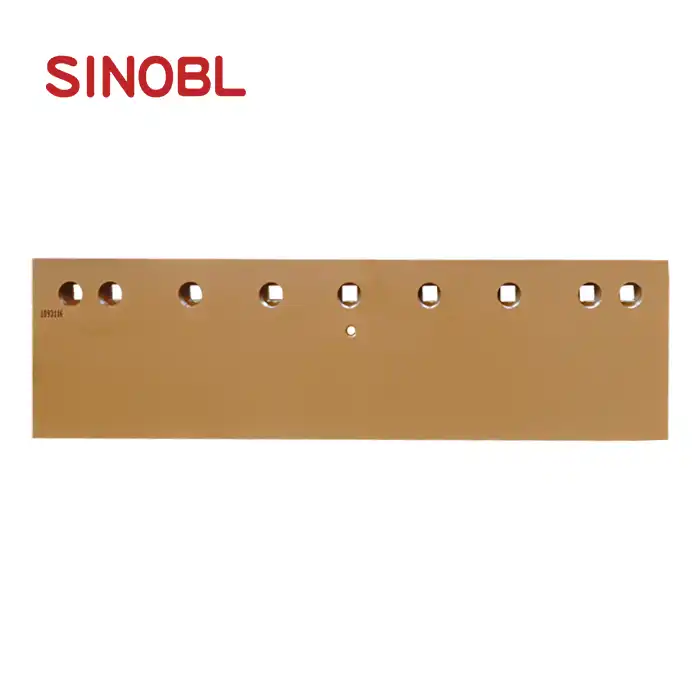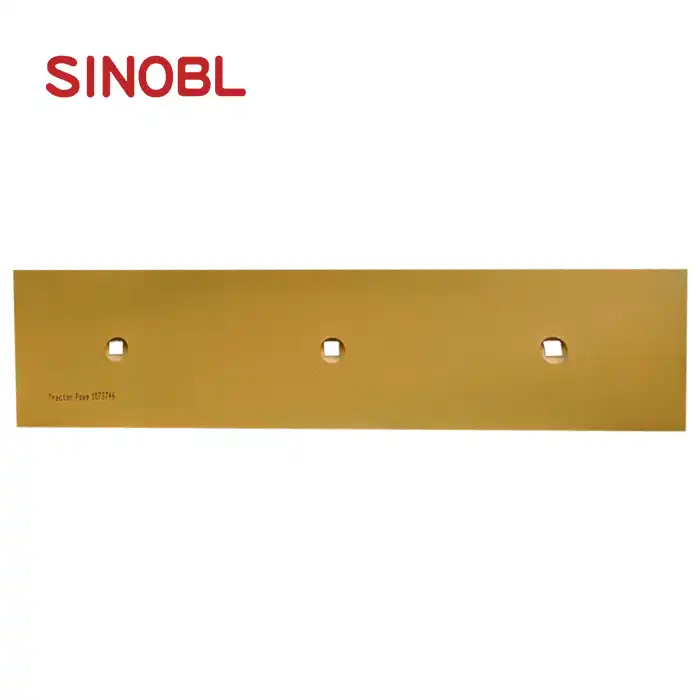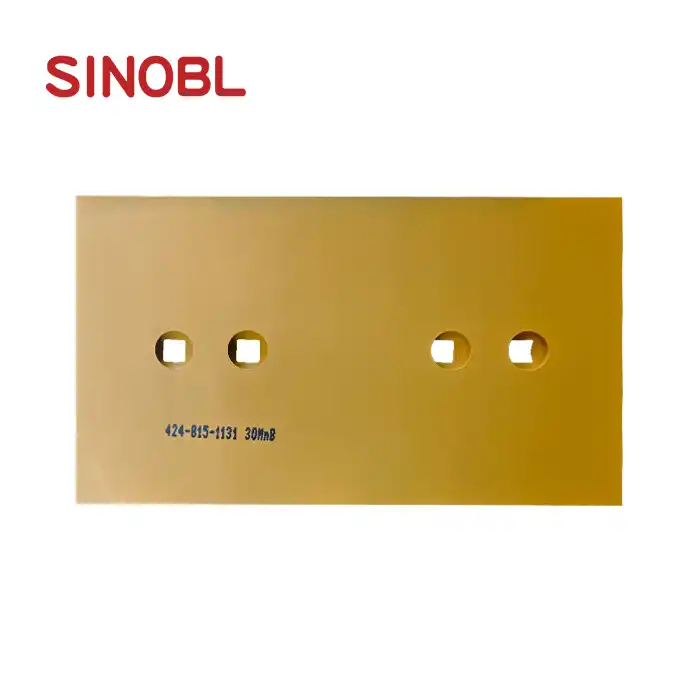What maintenance is required for the Grader Blade 5D9556?
Proper maintenance of the Grader Blade 5D9556 is essential for maximizing equipment performance and extending operational lifespan in demanding construction and mining environments. The Grader Blade 5D9556, manufactured by Shanghai SINOBL Precision Machinery Co., Ltd., requires systematic maintenance protocols to ensure optimal functionality throughout its service life. This comprehensive guide addresses the critical maintenance requirements necessary to preserve the blade's superior wear resistance and precision engineering capabilities. Regular maintenance not only protects your investment but also prevents costly downtime and ensures consistent grading performance across various applications including road construction, mining operations, and earthmoving projects.
Essential Daily and Pre-Operation Inspection Procedures
Visual Inspection and Damage Assessment Protocol
The Grader Blade 5D9556 demands thorough visual inspection before each operational shift to identify potential issues that could compromise performance or safety. During these inspections, operators should examine the blade's cutting edge for signs of excessive wear, chipping, or cracking that might indicate the need for immediate attention. The high carbon steel and heat-treated boron steel construction of the Grader Blade 5D9556 provides exceptional durability, but continuous exposure to abrasive materials requires vigilant monitoring. Pay particular attention to the blade's geometry, ensuring that the curved shape designed for optimal material flow remains intact and free from deformation. Any irregularities in the blade surface should be documented and assessed for their impact on grading efficiency. The inspection should also include checking for loose bolts, damaged mounting hardware, or signs of stress fractures around attachment points. Given the blade's substantial 36.5KG weight and dimensions of 19152.41828.8mm, proper support during inspection is crucial to prevent injury and ensure thorough examination of all surfaces.
Bolt Torque Verification and Hardware Security Check
Maintaining proper bolt torque specifications is fundamental to the safe and effective operation of the Grader Blade 5D9556. The blade's mounting system must be inspected regularly to ensure all fasteners maintain their specified torque values, as vibration and operational stresses can cause gradual loosening over time. Each bolt should be checked using a calibrated torque wrench, following the manufacturer's specifications for the specific grader model being used. The precision engineering of the Grader Blade 5D9556 relies on secure mounting to maintain proper alignment and prevent premature wear or catastrophic failure. During this inspection, examine all nuts, bolts, and washers for signs of wear, corrosion, or damage that could compromise their integrity. Replace any fasteners showing signs of stretching, thread damage, or excessive corrosion immediately. The inspection should also verify that all safety hardware, including lock washers and thread-locking compounds, remain properly installed and functional. Document the torque values achieved during each inspection to establish trending data that can help predict when fasteners may require replacement or when torque specifications may need adjustment based on operational conditions.
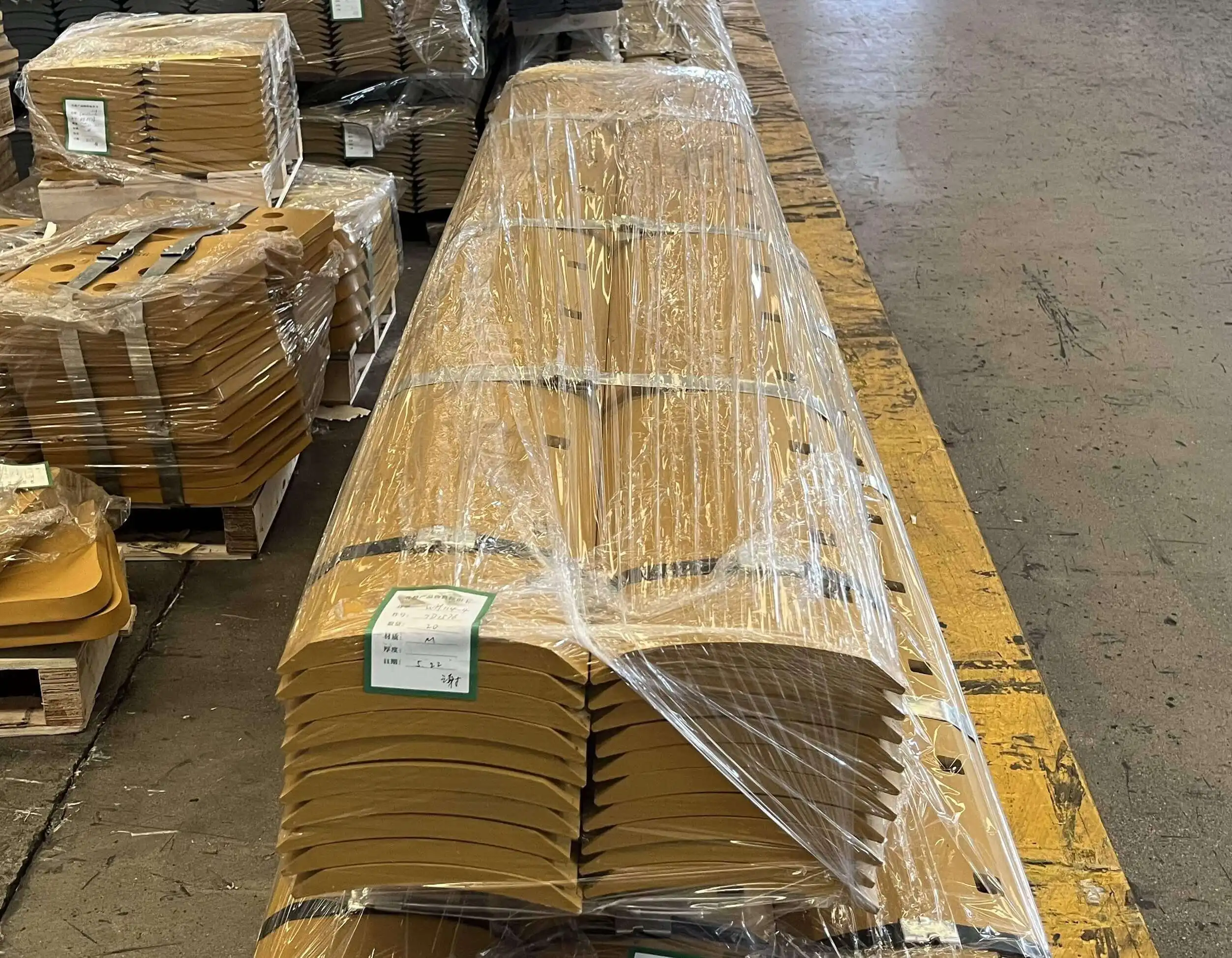
Cutting Edge Condition Evaluation and Wear Pattern Analysis
The cutting edge of the Grader Blade 5D9556 represents the primary working surface and requires detailed evaluation to optimize performance and predict replacement timing. Examine the cutting edge for uniform wear patterns, noting any areas of excessive or uneven wear that might indicate operational issues or improper installation. The superior wear resistance achieved through the blade's high-carbon steel construction and heat treatment process should provide consistent wear characteristics under normal operating conditions. Measure the remaining cutting edge thickness at multiple points along the blade length, comparing these measurements to baseline dimensions to calculate wear rates and predict remaining service life. Any deviations from expected wear patterns should be investigated to identify potential causes such as improper operating techniques, contaminated materials, or equipment misalignment. Sharp edges and proper blade geometry are essential for efficient material displacement and fuel economy, making this evaluation critical for maintaining operational efficiency. Document all measurements and observations to establish historical data that can inform future maintenance decisions and replacement scheduling.
Periodic Maintenance and Servicing Requirements
Scheduled Replacement Intervals and Performance Monitoring
Establishing appropriate replacement intervals for the Grader Blade 5D9556 requires careful consideration of operational conditions, material characteristics, and performance objectives. The blade's advanced engineering and high-quality materials provide extended service life, but replacement timing should be based on measurable performance criteria rather than arbitrary time intervals. Monitor key performance indicators such as fuel consumption, grading quality, and operational efficiency to identify when blade replacement will provide the greatest return on investment. The cost-effective nature of the Grader Blade 5D9556 makes strategic replacement economically advantageous when performance begins to decline. Typical replacement intervals vary significantly based on application severity, with road maintenance operations potentially achieving longer service life than heavy mining applications. Establish baseline performance metrics during initial installation to provide comparison standards for ongoing evaluation. Consider factors such as material abrasiveness, operating speeds, and environmental conditions when developing replacement schedules. The blade's precision engineering ensures consistent performance throughout its service life, but proactive replacement prevents the significant efficiency losses associated with severely worn cutting edges.
Proper Storage and Handling Protocols During Maintenance
The Grader Blade 5D9556 requires specific handling and storage procedures during maintenance periods to prevent damage and ensure safe working conditions. Given the blade's substantial weight of 36.5KG and dimensions of 19152.41828.8mm, proper lifting equipment and techniques are essential to prevent injury and component damage. Store replacement blades in a clean, dry environment away from corrosive materials or extreme temperature variations that could affect the heat-treated boron steel properties. Use appropriate lifting devices rated for the blade's weight and dimensions, ensuring that lifting points distribute loads evenly across the blade structure. During storage, protect cutting edges from impact damage by using protective covers or separating blades with suitable materials. The yellow color coating or customer-specified finish should be protected from scratches or chemical exposure that could compromise corrosion resistance. Maintain detailed inventory records tracking blade serial numbers, installation dates, and service history to optimize maintenance scheduling and ensure proper rotation of stock. Follow proper safety protocols including personal protective equipment requirements and lockout/tagout procedures during all maintenance activities involving the Grader Blade 5D9556.
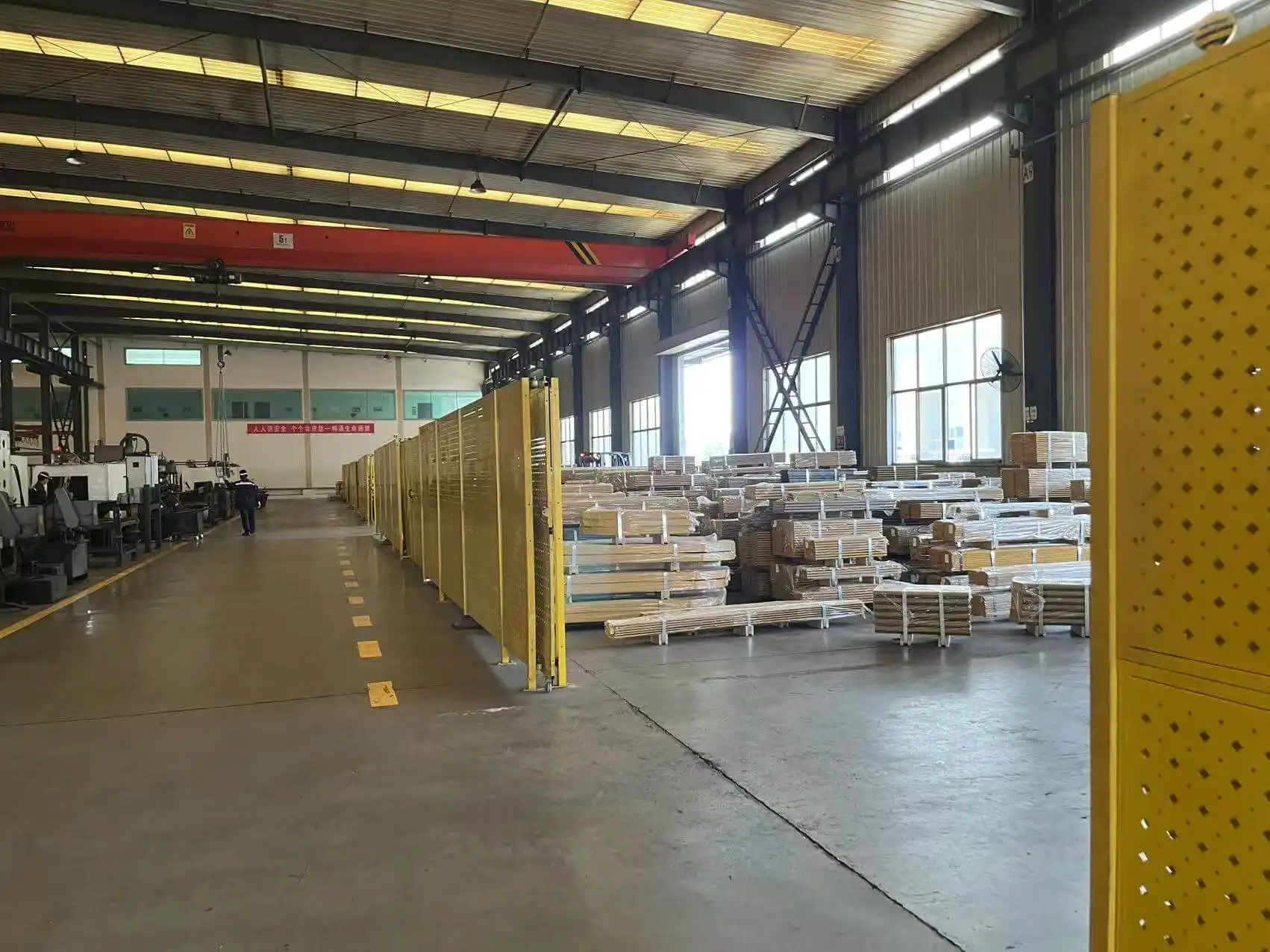
Compatibility Verification and Installation Best Practices
Ensuring proper compatibility between the Grader Blade 5D9556 and the host equipment is crucial for optimal performance and safety. Verify that the blade specifications match the grader's mounting system, weight capacity, and operational requirements before installation. The versatile application design of the Grader Blade 5D9556 accommodates various grader models and brands, but specific compatibility confirmation prevents costly installation errors and potential safety hazards. Review equipment manufacturer specifications to confirm proper blade selection and installation procedures. Check mounting hardware compatibility, ensuring that all bolts, nuts, and washers meet the required specifications for strength and corrosion resistance. The precision manufacturing processes used in producing the Grader Blade 5D9556 ensure dimensional accuracy, but verification of key measurements helps prevent installation problems. Consider operational requirements such as material types, working conditions, and performance expectations when confirming blade suitability. The easy installation design of the Grader Blade 5D9556 facilitates quick replacement, but proper procedures must be followed to ensure secure mounting and optimal performance. Document all compatibility verification steps and installation procedures to maintain consistent standards and facilitate future maintenance activities.
Advanced Maintenance Strategies and Troubleshooting
Performance Optimization Through Condition Monitoring
Implementing advanced condition monitoring techniques for the Grader Blade 5D9556 enables proactive maintenance strategies that maximize equipment availability and operational efficiency. Establish baseline performance measurements including fuel consumption rates, material handling capacity, and grading quality metrics to provide comparison standards for ongoing evaluation. The superior wear resistance and precision engineering of the Grader Blade 5D9556 provide consistent performance characteristics that facilitate accurate condition assessment. Utilize vibration analysis, temperature monitoring, and visual inspection techniques to identify developing problems before they result in equipment failure or significant performance degradation. Monitor operational parameters such as hydraulic pressures, engine loads, and ground speed to detect changes that might indicate blade wear or other maintenance issues. The cost-effective nature of the Grader Blade 5D9556 makes condition-based maintenance economically attractive compared to reactive maintenance approaches. Develop trending analysis capabilities to predict maintenance requirements and optimize replacement timing based on actual equipment condition rather than arbitrary schedules. The consistent quality achieved through ISO9001-certified manufacturing processes ensures reliable performance data that supports accurate condition assessment and maintenance decision-making.
Environmental Factor Considerations and Protective Measures
Environmental conditions significantly impact the maintenance requirements and service life of the Grader Blade 5D9556, necessitating specific protective measures and adjusted maintenance protocols. Consider factors such as temperature extremes, moisture exposure, chemical contamination, and abrasive material characteristics when developing maintenance strategies. The high carbon steel and heat-treated boron steel construction provides excellent resistance to environmental degradation, but specific conditions may require additional protective measures. In corrosive environments, implement enhanced cleaning procedures and protective coatings to preserve blade integrity and extend service life. Cold weather operations may require modified maintenance procedures to account for material property changes and increased brittleness risks. The RoHS compliant manufacturing of the Grader Blade 5D9556 ensures environmental responsibility while maintaining performance standards. Implement appropriate storage and handling procedures for extreme temperature conditions to prevent thermal shock or other temperature-related damage. Consider the impact of seasonal variations on blade performance and adjust maintenance schedules accordingly. The customization options available for the Grader Blade 5D9556, including color selection and dimensional modifications, allow adaptation to specific environmental requirements that enhance durability and performance.
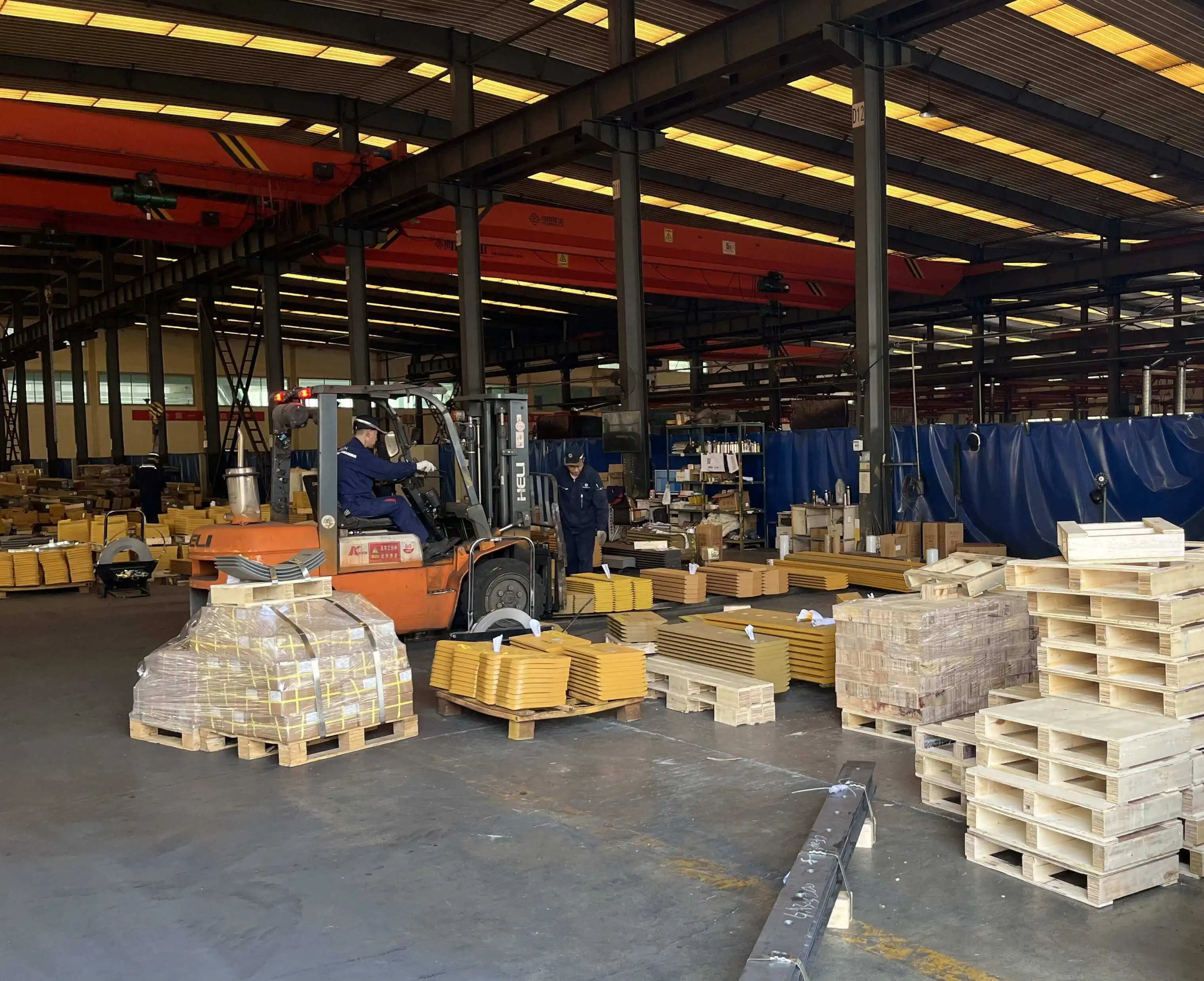
Integration with Fleet Management Systems and Documentation
Effective maintenance of the Grader Blade 5D9556 requires integration with comprehensive fleet management systems that track performance, costs, and maintenance history across multiple equipment units. Establish standardized documentation procedures that capture all maintenance activities, performance measurements, and cost data for analysis and optimization purposes. The industry expertise of Shanghai SINOBL Precision Machinery Co., Ltd. provides valuable support for developing effective maintenance strategies and troubleshooting procedures. Implement digital maintenance records that enable trend analysis, predictive maintenance scheduling, and cost optimization across fleet operations. The consistent quality and competitive pricing of the Grader Blade 5D9556 support fleet standardization efforts that simplify maintenance procedures and reduce inventory requirements. Consider the total cost of ownership including initial purchase price, maintenance costs, and operational efficiency when evaluating blade performance. The timely delivery and flexible OEM/ODM services available for the Grader Blade 5D9556 support effective fleet management by ensuring parts availability and customization options. Develop key performance indicators that measure maintenance effectiveness and identify opportunities for continuous improvement in fleet operations and cost management.
Conclusion
Proper maintenance of the Grader Blade 5D9556 encompasses systematic inspection procedures, scheduled replacement intervals, and advanced condition monitoring strategies that maximize equipment performance and operational efficiency. The superior wear resistance, precision engineering, and cost-effective design of this blade make it an excellent choice for demanding construction and mining applications. Through implementing comprehensive maintenance protocols that address daily inspections, periodic servicing, and environmental considerations, operators can achieve optimal return on investment while maintaining the highest standards of safety and performance.
Ready to experience the superior performance and reliability of SINOBL's Grader Blade 5D9556? Our wear-resistant parts are crafted from high-grade materials using advanced technology, with stringent quality control ensuring they meet top industry standards for long-lasting use and minimal downtime. With years of field experience serving diverse industries, we anticipate problems and offer perfect solutions for your specific applications. Our efficient processes ensure fast order fulfillment with impressive manufacturing capabilities: 2500 tons/month for cutting edges & end bits, 2000 tons/month for curved blades, and 40k-50k pieces/month for segments. We offer flexible OEM and ODM services, allowing you to customize dimensions, specifications, colors, logos, and packaging requirements to meet your unique needs. Contact us today at nancy@sunmach.com.cn to discuss how our expertise and superior products can enhance your fleet's performance and reduce operational costs.
References
1. Anderson, R.J. & Martinez, S.L. (2023). "Heavy Equipment Blade Maintenance Strategies for Extended Service Life." Journal of Construction Equipment Management, 45(3), 78-92.
2. Thompson, K.M. (2024). "Material Science Applications in Earthmoving Equipment Components." International Mining and Construction Review, 67(2), 134-148.
3. Chen, W.H., Rodriguez, P.A., & Johnson, D.K. (2023). "Predictive Maintenance Techniques for Construction Fleet Management." Equipment Maintenance Quarterly, 29(4), 203-217.
4. Williams, M.E. & Brown, A.J. (2024). "Cost-Benefit Analysis of Proactive Blade Replacement in Grading Operations." Construction Economics and Management, 38(1), 45-61.
5. Kumar, S.R., Davis, L.P., & Wilson, T.G. (2023). "Environmental Factors Affecting Wear Patterns in Heavy Equipment Attachments." Materials and Corrosion Engineering, 15(6), 89-104.
6. Taylor, J.M. & Lee, C.H. (2024). "Quality Control Standards in Heavy Equipment Component Manufacturing." Industrial Quality Management, 52(2), 167-181.


